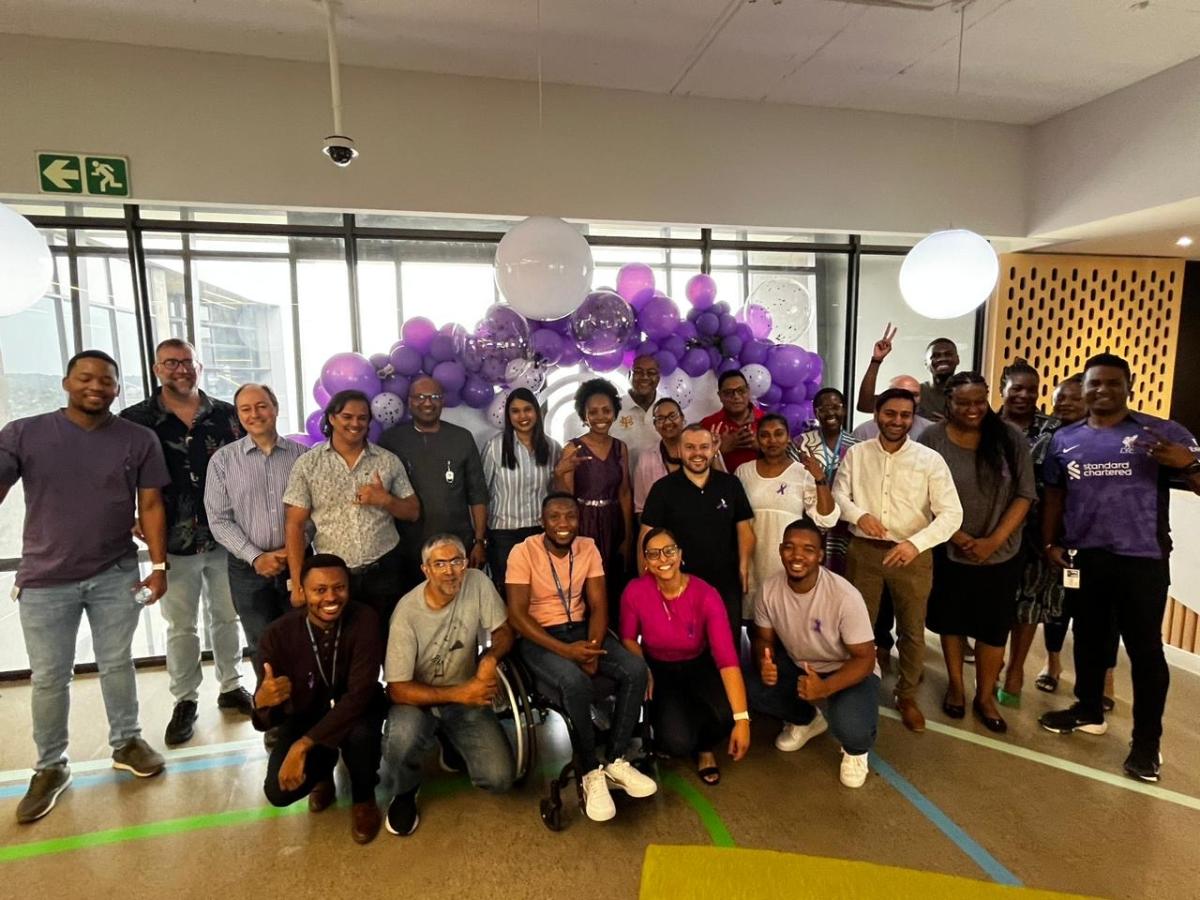Cisco: Building Inclusive AI Will Accelerate Innovation
By Mary Fernandez

This post was authored by Mary Fernandez, Cisco global lead for disability and neuro-inclusion.
Often when we talk about promoting inclusion of disabled and neurodivergent people in society we exclusively focus on work and education. While equitable access to education and employment are fundamental to participating in society, life isn’t and shouldn’t be just about work.
For example, I’m a newly single blind woman engaged in online dating. As I’m browsing profiles, I want to participate in this amusing, exciting, and sometimes treacherous part of life as fully as anyone else—and that includes wanting to know if my prospective matches’ profile pictures contain any metaphorical red flags. And you may think that because I’m blind, I don’t care about the aesthetics. If so, you would be wrong. For instance, while I appreciate that a shaved head paired with a full luscious beard is the preference for many, it is not the aesthetic for me.
In recognition of International Day for Persons with Disabilities, which is celebrated annually on December 3, I want to offer food for thought as we lean into technological advances. You see, online dating, AI, accessibility and disability are all closely linked, and if done right will lead to innovative applications which may seem unimaginable.
Accessibility Meets AI
Back to online dating. Pictures supposedly convey 1000 words, which is why online dating is so inherently visual. One picture tells us about someone’s spirit so deeply we will know if we want to spend 30- plus years with them. So, my dilemma: how do I participate in this social experiment?
One way for me to do that is to use a mobile app that connects blind and low-vision individuals with sighted volunteers through a live video call. I can open the app and ask a sighted person to describe someone’s profile picture.
While this approach is a great improvement over not having any information, it doesn’t give me freedom to participate autonomously in the rich social tapestry we call life. Plus, do you really want to involve a third party to judge how shallow you are based on your swiping directionality? Neither do I!
So that’s where I got creative and leveraged the biggest technological shift in a generation—artificial intelligence (AI). Through a rather cumbersome, but judgment-free process, I take screenshots, run it through an AI-powered image description app, and voila. Man sitting in car with sunglasses, a baseball hat in the dark? Left please.
Disability: The Great Shared Human Experience
My online dating journey certainly is amusing. However, there are deeper implications. Think about how the world treats and includes—or doesn’t—people with disabilities. Even if you are not disabled today, there will almost certainly come a day when you are. You might spend 6-12 weeks using crutches while the leg you broke skiing heals. Or maybe it’s that you will experience the slow progression of a degenerative condition that unfolds over time.
Short-term or life-long, disability is going to be part of the fabric of your life at some point.
Building a World with Disabled Communities
How we harness the power of AI to design a more equitable world for people with disabilities becomes a question of who is building AI and how they are building it.
In most aspects of society, disabled people have been relegated to the sidelines, and seldom expected to be in or promoted to decision-making roles. The narratives we commonly hear about disability and the disabled experience are often informed by non-disabled people who hold deep bias and fear around this topic.
Let’s try a little thought experiment. Picture a disabled woman in your mind right now.
I’m going to guess that the first image to pop into your mind is probably not that of a vivacious, fashion-forward woman of color strutting with her white cane through the streets of Washington, DC, sporting her favorite burnt orange booties. And you certainly will not picture her online dating profile, because we do not associate disability as part of the human experience, but rather as “other.”
Here’s another experiment. What do you think happens when you ask an AI image-generator to create pictures of disabled people?
As one commentator I recently heard speak said, the answer is, “You get a bunch of sad-looking white guys in wheelchairs.”
That served as a bit of a laugh line in his presentation, but it was uncomfortable laughter, because we know why generative AI engines produce images like that. We get out of AI what we put into it. And right now, a lot of bias and assumptions are integrated into it.
The result is that the AI we’re expecting to enrich all our lives, instead may be a promoter of harmful narratives and stereotypes of marginalized communities.
One of these erroneous narratives is that inclusion of disabled and neurodivergent communities inherently equates to slowing progress and innovation: further, that this inclusion may negatively impact the quality of the result to something “less than.”
In our industry, speed has been regarded as one of the defining factors for success and profitability. Hence, the value of inclusion of marginalized communities is in direct contrast to what is seen as a competitive advantage. The data tells us that this is far from the truth. In fact, inclusion of disabled and other marginalized perspectives, rather than being a hindrance, results in outperforming the competition.
But stories and images are powerful. The narratives we breathe in from the moment we are children are hard to dismantle even when we see the numbers. Data isn’t enough to move the needle. Instead, focusing on proactive learning, engagement with the disability community, promotion of disabled and neurodivergent individuals into decision-making positions, and appreciation for and of the time of disabled people, paired with storytelling is truly what can break the biases built into our neural networks.
Inclusion Powers Innovation
Disabled and neurodivergent people live in a world that is not designed for us. So, we create solutions. In fact, some of your most beloved technological advancements were developed by disabled people when we had to find a solution to further participate in day-to-day life.
Did you know that the keyboard on your desk, the electric toothbrush you are hopefully using, and all dictation features across your devices, along with being able to speak with your home assistants, were all results of innovation driven by the needs of the disability community?
Revolutionary technological advances are meant to break rather than build barriers, build connection rather than disconnection, and increase enjoyment, fun and productivity rather than take them away. And while the creativity and needs of the disabled community have launched innovations that make all our lives easier and richer—audio books, anyone?-—many of the technical advances today are excluding and leaving behind disabled and neurodivergent users, because there is a lack of intentionality in building accessible advances which serve all.
I wonder if in our desire for speed we’ve forgotten that to speed up, to create and innovate, sometimes we must pause and wonder, who else can we serve? Technological advances that last and don’t just become an amusing memory in two to three years are those which serve so many people that we cannot imagine our lives without them. Knowing that disability will impact us all at some point in life, thoughtfulness about designing a more accessible world logically follows as a step to creating those kinds of meaningful advances. This is why inclusive AI is so crucial.
So, let’s flip the narrative. Building inclusive AI isn’t about inhibiting speed. It is about accelerating innovation.
Powering an Inclusive Future for All
Through the tireless work of disabled advocates, the United Nations recognized how deeply disability is intertwined with humanity when it first proclaimed December 3, as International Day of Persons with Disabilities more than 30 years ago.
This year, the theme for IDPWD was “United in action to rescue and achieve the sustainable development goals for, with and by persons with disabilities.”
Celebration is stopping to acknowledge and feel joy and pride in all that we have accomplished. Yes, you may celebrate having to yell at your Alexa today because it didn’t understand what you asked and went off on a tangent. Know that the same home assistant helped someone turn on their oven because we did not build touch screens with motor disabilities in mind.
But celebration is also a commitment to growth, to saying, “Where do we go next and how do we do it better?” Designing with the disability community, prioritizing accessibility from the moment you think of an idea, actively including those of us who interact with the world differently, that’s how we truly celebrate and honor difference.
Artificial intelligence is the biggest development in tech in a generation. It has the power to make our world a more inclusive place. Now is the time for everyone involved in AI to commit to building it for, with, and by persons with disabilities—then maybe someday it will power full inclusion. Plus make it more efficient for me to decide whether to swipe right or left as I seek a life partner.
View original content here.

